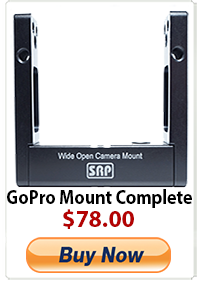Why I Don’t Care About Raw Video from the 5D
The 5DIII now has raw video, so what?
For me, it changes nothing. I have done the magic lantern thing with my T2i, it brought an impressive array of features to a budget camera. I don’t think it really made it a good enough tool to still bring onto sets though, in 2011 or now. It’s stable for a hack but it voids your warranty and didn’t raise the quality of the video enough to validate its inherent risk.
The cool thing is there are now several cameras under $10k that can shoot raw video, something unheard of just over a year ago. How times change. I still don’t use any of them and most my current projects are shot on RED (I’m not particularly a fan of their raw but it’s undeniable popular especially in music videos) or a non-raw camera. I must be trapped in 2012! No, I think the working industry isn’t trying to chase the latest craze and is focused on keeping the machine moving, nobody has time to learn a new camera when you already have a powerful well-equipped camera set to go. We get lost in the hype online when we play armchair camera designer.
As impressive as it is that we have raw video out of the 5D, I won’t be looking forward to getting footage from it. I’m sure it’ll look great but there is an inherent lack of professionalism when using hacked cameras (or on some sets, a DSLR is just not acceptable regardless). Sure, I’m with you in saying these cameras are being cut off at the knees by manufacturers protecting their high-end models, but you are paying for a support system, reliability, and a package that is recognized and respected in the industry. CF cards are being capped out with the data rate on raw and dropped frames or corruption is far more likely to happen as a result of offloading the buffer. Just unnecessary risks all around.
I am also just not a fan of raw. It’s incredibly powerful but entirely unnecessary when you do things right the first time. I’ve been vocal about my advocacy for 10-bit 4:2:2 codecs like ProRes and DNxHD on twitter for a while. They are strong enough compression to stand up under heavy manipulation and are lightweight so you don’t need to be running a dedicated editing workhorse or a ton of storage space. It’s getting more manageable as Moore’s Law carries us into more power and storage at an affordable price but I still view it as overkill in most environments even if it is manageable.
The fact that the most readily available options below $5000 are either raw or h264 variants is really frustrating for budget shooting. I hope for legitimate options between those extremes to be the next wave of advancements. That’s like picking between DVD and IMAX when all you need is a good home theatre and bluray.
While it’s exciting that we are finally getting the full power out of the 5D, I hope that it doesn’t set a precedence for hacking cameras and instead sets a precedence for manufacturers to deliver the better compression options in all cameras.












Pingback: Using Magic Lantern RAW on Your Canon - Is It Worth It? - Doddle